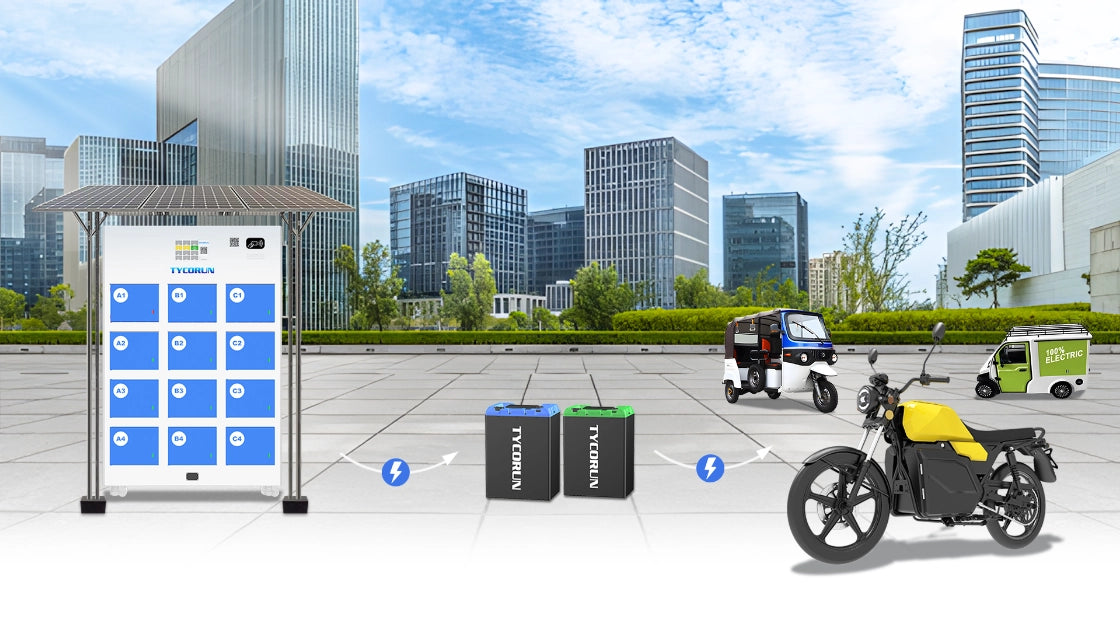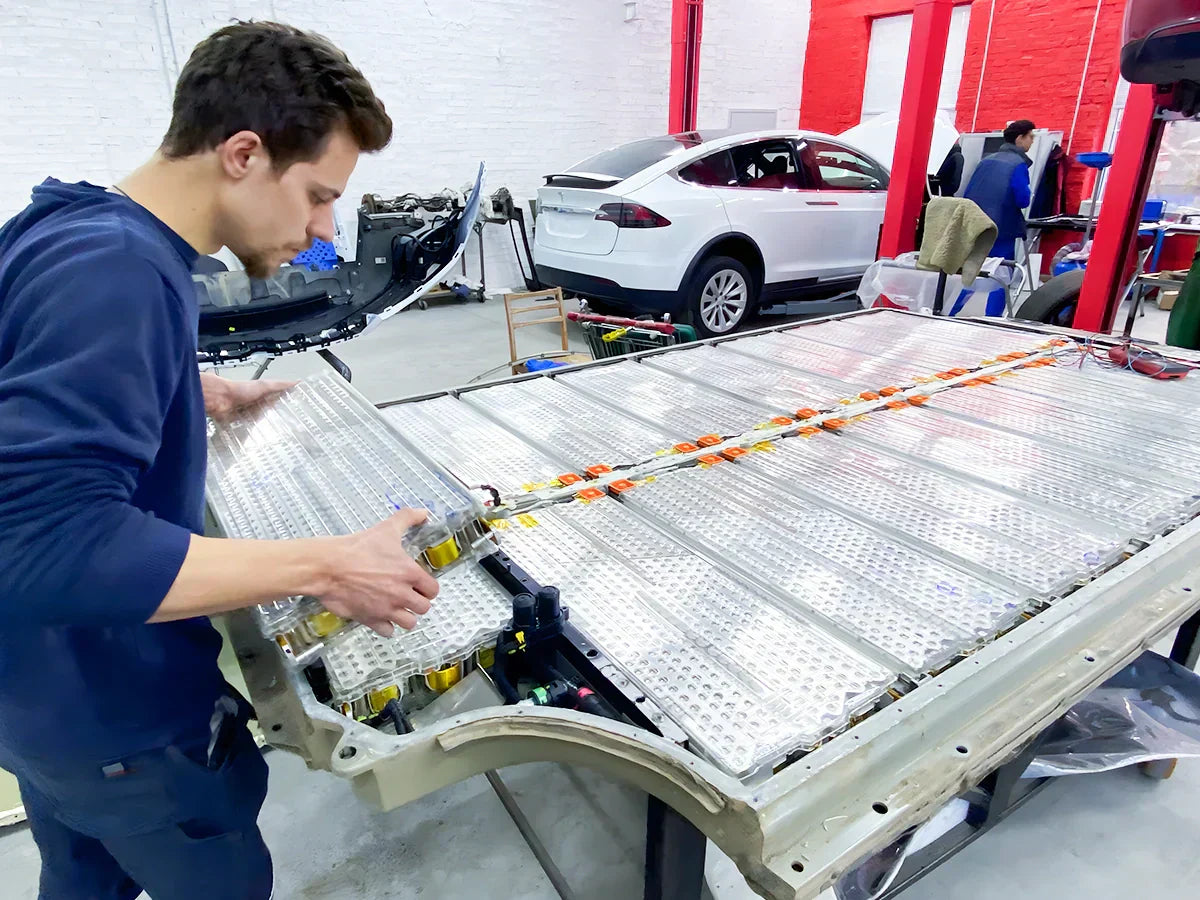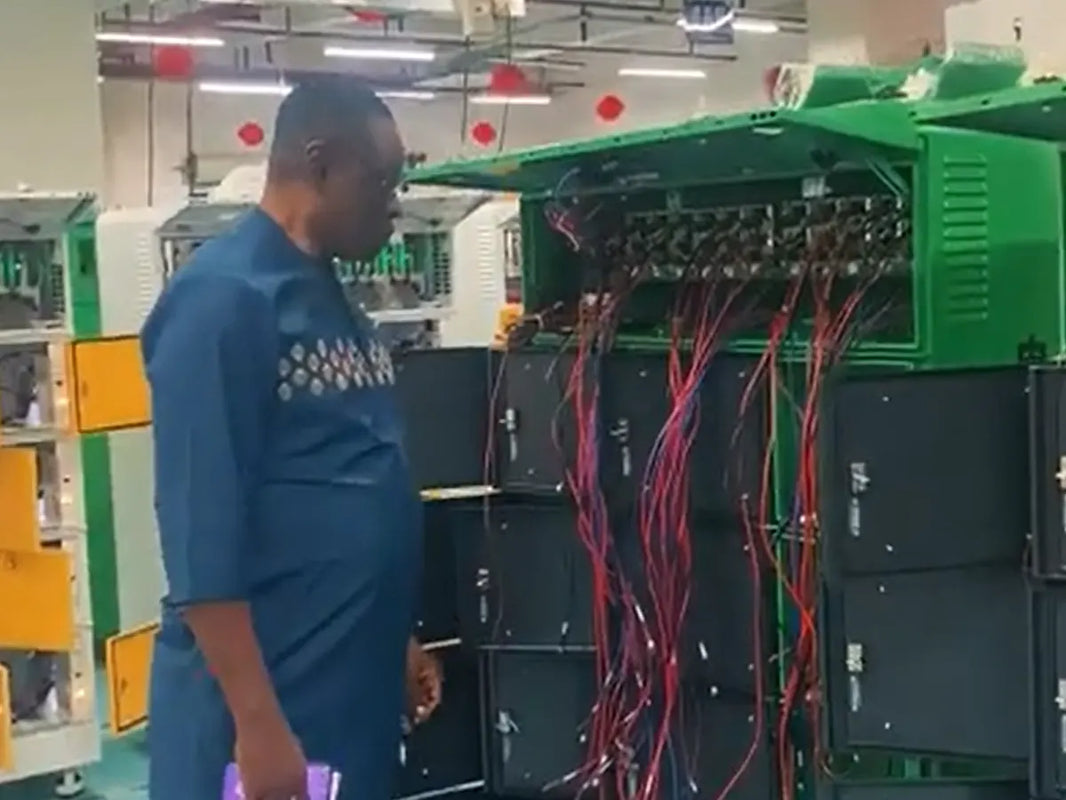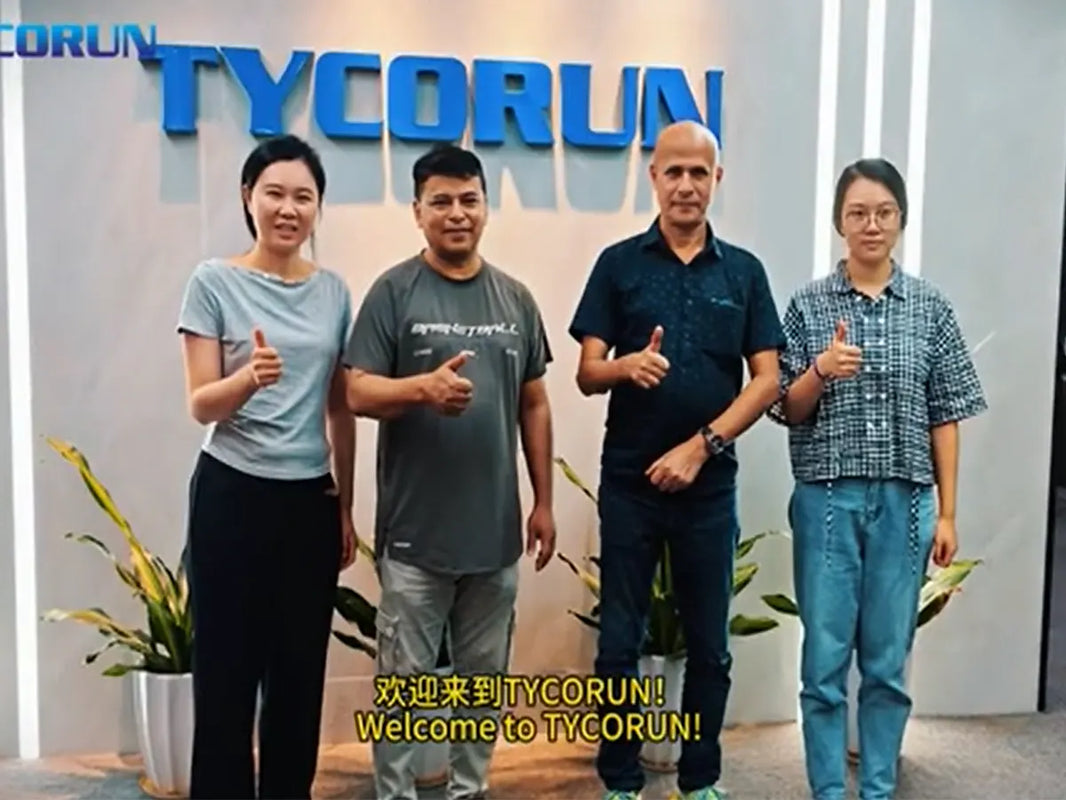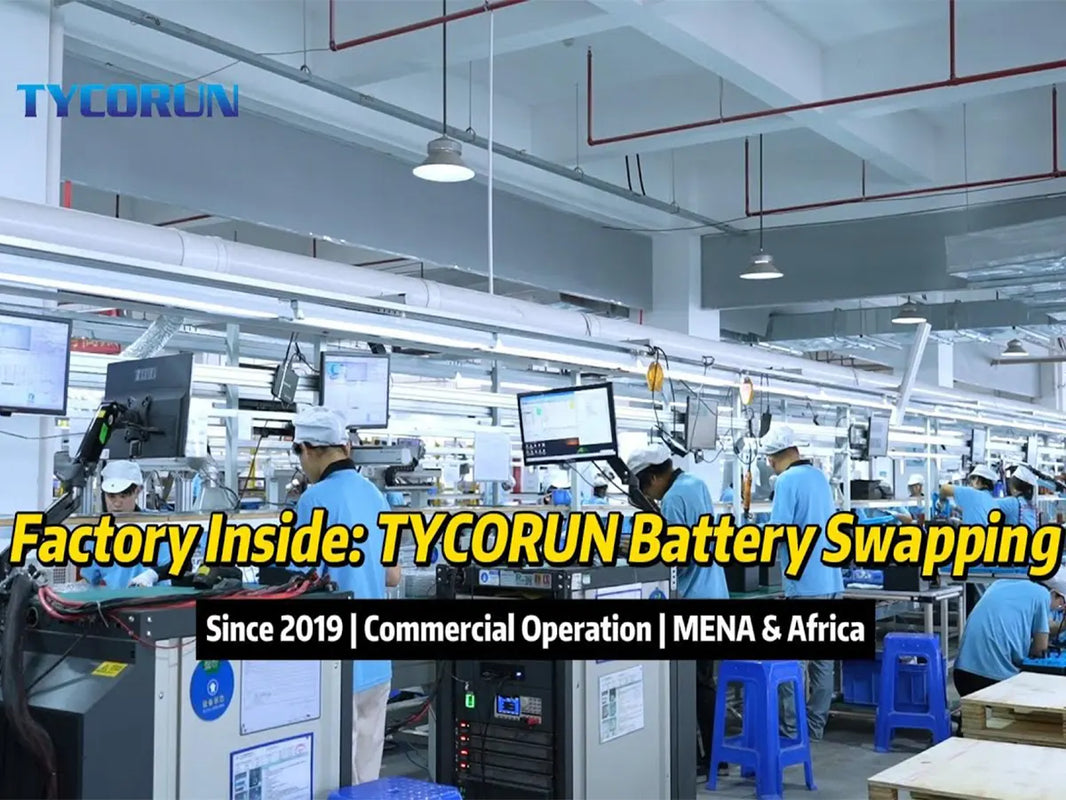
Main content:
In 2013, Tesla demonstrated a 90-second battery swap for the Model S, showing how drivers could exchange a depleted pack for a fully charged one faster than refueling with gasoline. A pilot station followed in 2014 at Harris Ranch, California, but the program remained limited and Tesla eventually shifted its focus to the growing Supercharger network instead.
Although Tesla moved away from swapping, the concept didn’t disappear. It has gained traction in other markets where quick turnaround is critical. One standout example is TYCORUN, which has developed battery swap systems for three-wheelers widely used in cities for transport and delivery services.
In this article, we’ll look at Tesla battery swap efforts, why they didn’t scale, and how companies like TYCORUN are proving that battery swapping still has a valuable role—especially in urban mobility where keeping vehicles on the road matters most.
Tesla's Million-Mile Battery Breakthrough

Following years of incremental improvement, Tesla’s battery research partner led by Jeff Dahn has developed lithium-ion cells that can last well over one million miles with minimal capacity loss—potentially supporting fleets like robotaxis or long-haul trucks. These advanced cells could endure thousands of full charge-discharge cycles while maintaining high performance.
This changes the economic calculus: swap stations that retain and rotate packs could amortize battery investments over many more miles. Even if standardization and inventory complexity remain, a million-mile pack reduces replacement frequency and cost per mile.
Tesla's Battery Swap Challenge: Can It Return with Durable EV Batteries?
Tesla's battery swap challenge involved creating an infrastructure capable of quickly exchanging depleted car batteries for fully charged ones, offering a faster alternative to conventional charging. The implementation of battery swapping itself requires careful planning and a complete set of solutions—from technology and logistics to customer adoption.

When Tesla introduced its battery swap idea, the goal was ambitious but difficult to achieve. Several challenges stood in the way:
- Speed: The aim was to complete a battery swap in under five minutes, comparable to a gasoline refuel.
- Infrastructure: Building and maintaining a widespread network of swap stations required massive investment.
- Cost: Both the construction of stations and the operation of a shared-battery system were highly expensive.
- High Costs & Complexity: Specialized equipment and logistics made the system difficult to scale.
- Vehicle & Battery Standardization: Success depended on standardized vehicle designs and battery packs, which Tesla could not enforce across its diverse models and proprietary technology.
Tesla already has strong battery technology for its EVs—such as the Model Y, Model S, and Model X. While production costs for batteries remain high, other factors have influenced why battery swapping was never pursued further. Tesla shifted its focus to higher-priority goals, including building the Nevada Gigafactory and expanding its Supercharger network. From a business standpoint, plug-in charging proved far more practical and profitable than developing costly swapping infrastructure.
So, could Tesla bring back the idea of battery swapping now that durable EV power packs are already a reality in its lineup? Ultimately, the answer depends on Tesla’s future vision and strategy.
Tesla's Battery Swapping Strategy
Before giving up on battery swapping technology for Tesla cars, let’s first look at which Tesla models this business was expected to apply to, so we can gain some insight:
- Robotaxis: A 90-second battery swap would keep cars instantly charged for more driving duty, with the process potentially fully automated.
- Tesla Semi: Could swap battery packs on the road faster than refueling a diesel truck, or even swap in a larger pack for long-distance shipping.
- Cybertruck: Swap stations at parks, trailheads, and travel routes could allow quick recharges before heading into the wilderness.
- Racing: Instant swapping of 100% charged packs would make it ideal for drag races or circuit events.
- Apartment Dwellers & Businesses: Swap stations could provide convenience for those without home charging and serve as perks for employees.
- V2G & Emergencies: Swapping could support vehicle-to-grid, letting batteries sell power to the grid, or act as backup during blackouts.
The idea was most realistic for the Model S (and possibly Model X), while feasibility for the Model 3, Model Y, Semi, Cybertruck, and Roadster remained uncertain. Still, the benefits of battery swap and swap stations across different use cases were clear.
Does That Mean Battery Swap For Car Is Dead?

Not at all—battery swapping for cars isn’t dead, but it has shifted directions. Tesla may have stepped away from the idea, but companies like NIO battery swap in China have proven that swapping can work at scale, with thousands of active swap stations serving EV owners daily. The concept thrives where vehicles are standardized, infrastructure is carefully planned, and customer demand is strong.
For cars, swapping is most promising in markets with dense urban traffic, commercial fleets, and robotaxi operations, where saving time on charging translates to higher efficiency and less downtime. Meanwhile, in other regions, fast-charging networks remain the more practical solution.
And outside of cars, battery swapping technology is gaining real momentum. Companies like TYCORUN are showing how this model works especially well for three-wheeler EVs, which are widely used in cities for deliveries and passenger transport. Their smaller, standardized battery packs make swapping faster, cheaper, and easier to scale—highlighting that while Tesla focused on Superchargers, swapping technology is very much alive in other parts of the EV industry.
TYCORUN Battery Swap for Three-Wheelers
In emerging markets across Asia, Africa, and Latin America, three-wheelers are essential for urban mobility. They serve as taxis, delivery vehicles, and short-distance transport in crowded cities.
TYCORUN has stepped in with a battery swap solution designed specifically for three-wheelers. Instead of waiting hours to recharge, drivers can pull into a swap station and exchange their depleted battery for a fully charged one within minutes.

Benefits of TYCORUN's Three-Wheeler Swappable Battery
- Faster turnaround: Drivers maximize time on the road and minimize idle time.
- Lower upfront costs: By separating battery ownership from the vehicle, buyers can save on initial purchase prices.
- Scalability in cities: Stations can be deployed in urban areas without needing massive grid upgrades.
- Sustainability: Centralized charging allows better monitoring, balancing, and recycling of batteries.
Final Thougths
Tesla's technical achievements (like life-extending battery chemistry) are remarkable—and could eventually support fleet-level swapping if Tesla designs future vehicles accordingly. But for now, swapping remains a niche solution outside Tesla's mainstream vehicle business.
Related Articles: Battery swap vs charging, Best battery swap station system, Battery swapping station classification

